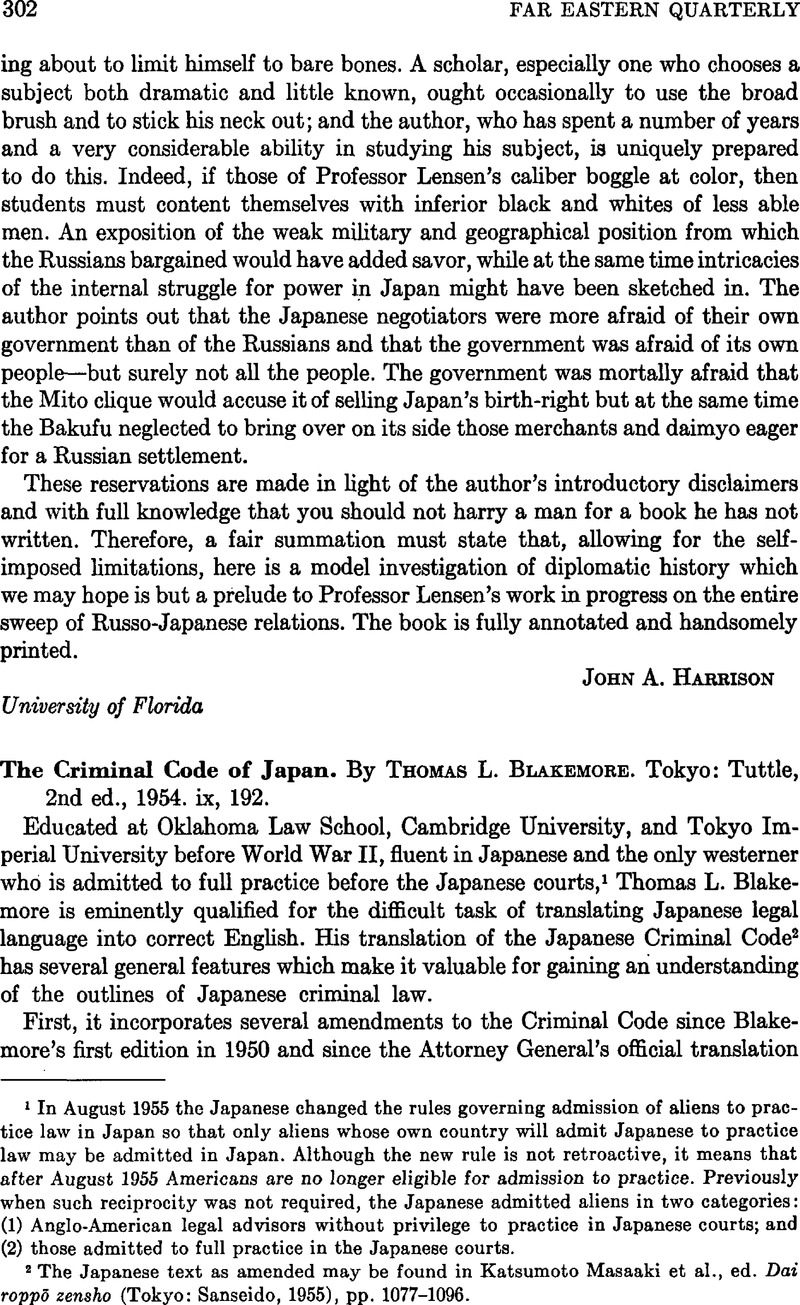No CrossRef data available.
Published online by Cambridge University Press: 23 March 2011

1 In August 1955 the Japanese changed the rules governing admission of aliens to practice law in Japan so that only aliens whose own country will admit Japanese to practice law may be admitted in Japan. Although the new rule is not retroactive, it means that after August 1955 Americans are no longer eligible for admission to practice. Previously when such reciprocity was not required, the Japanese admitted aliens in two categories:
(1) Anglo-American legal advisors without privilege to practice in Japanese courts; and
(2) those admitted to full practice in the Japanese courts.
2 The Japanese text as amended may be found in Masaaki, Katsumoto et al. ed. Dai roppō zensho (Tokyo: Sanseido, 1955), pp. 1077–1096.Google Scholar
3 Attorney General's Office, The Constitution of Japan and Criminal Laws (Tokyo, 1951)Google Scholar. This translation is often more literal but more awkward than Blakemore's. It includes translations of the Code of Criminal Procedure and other important laws.
4 In Art. 7 of the Japanese Constitution taisha and tokusha are rendered general amnesty and special amnesty. (Dai roppō zensho, p. 20).Google Scholar